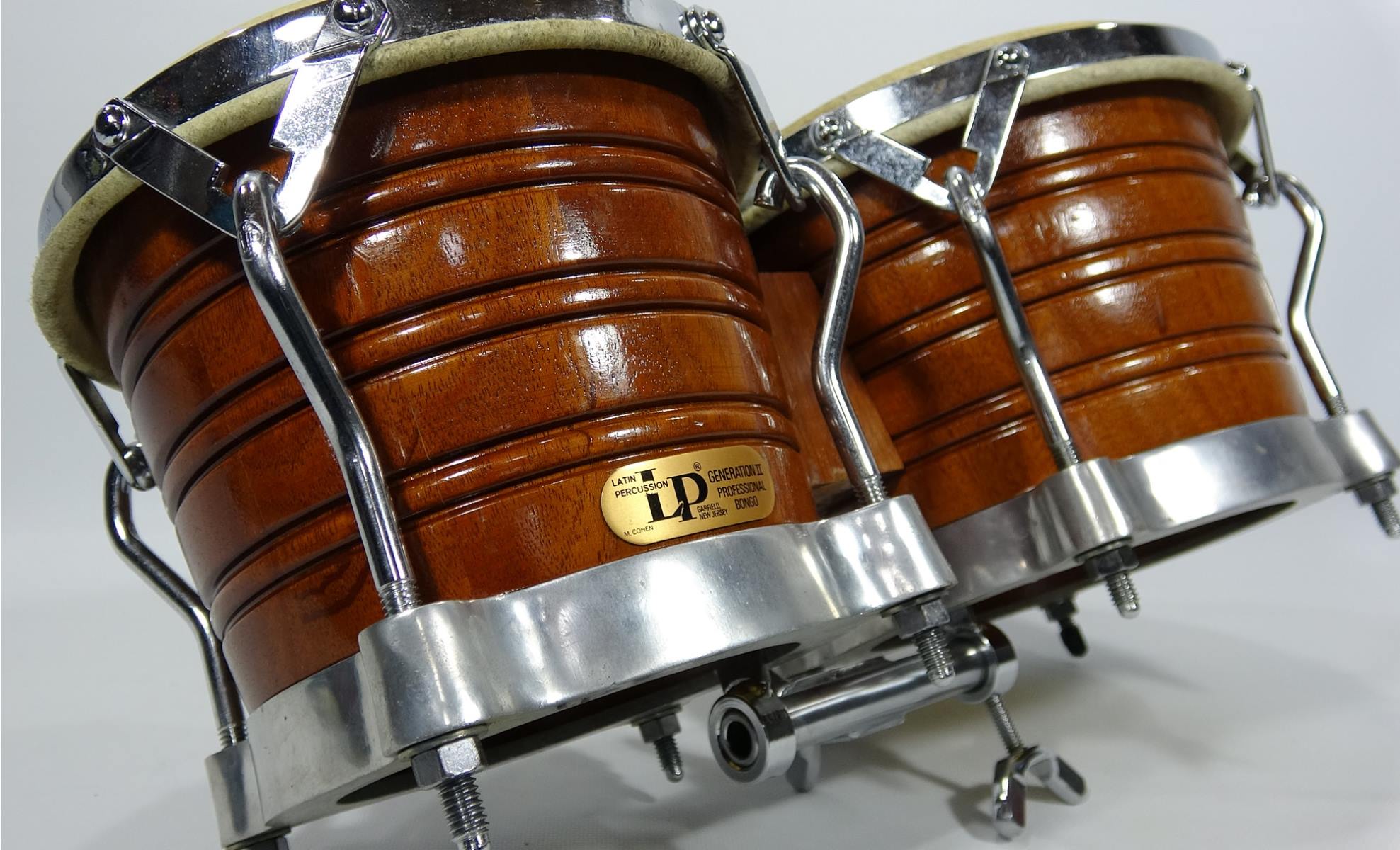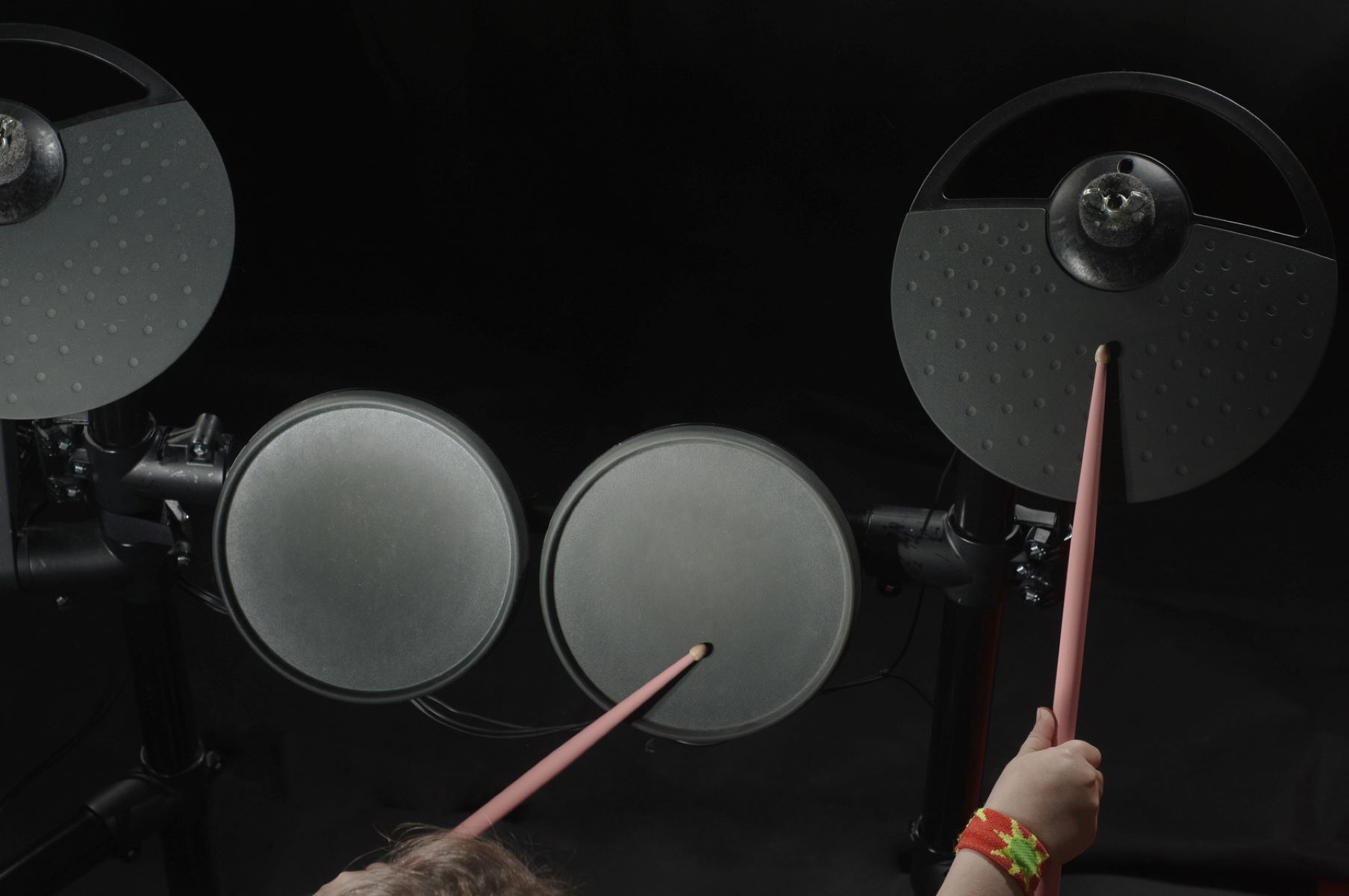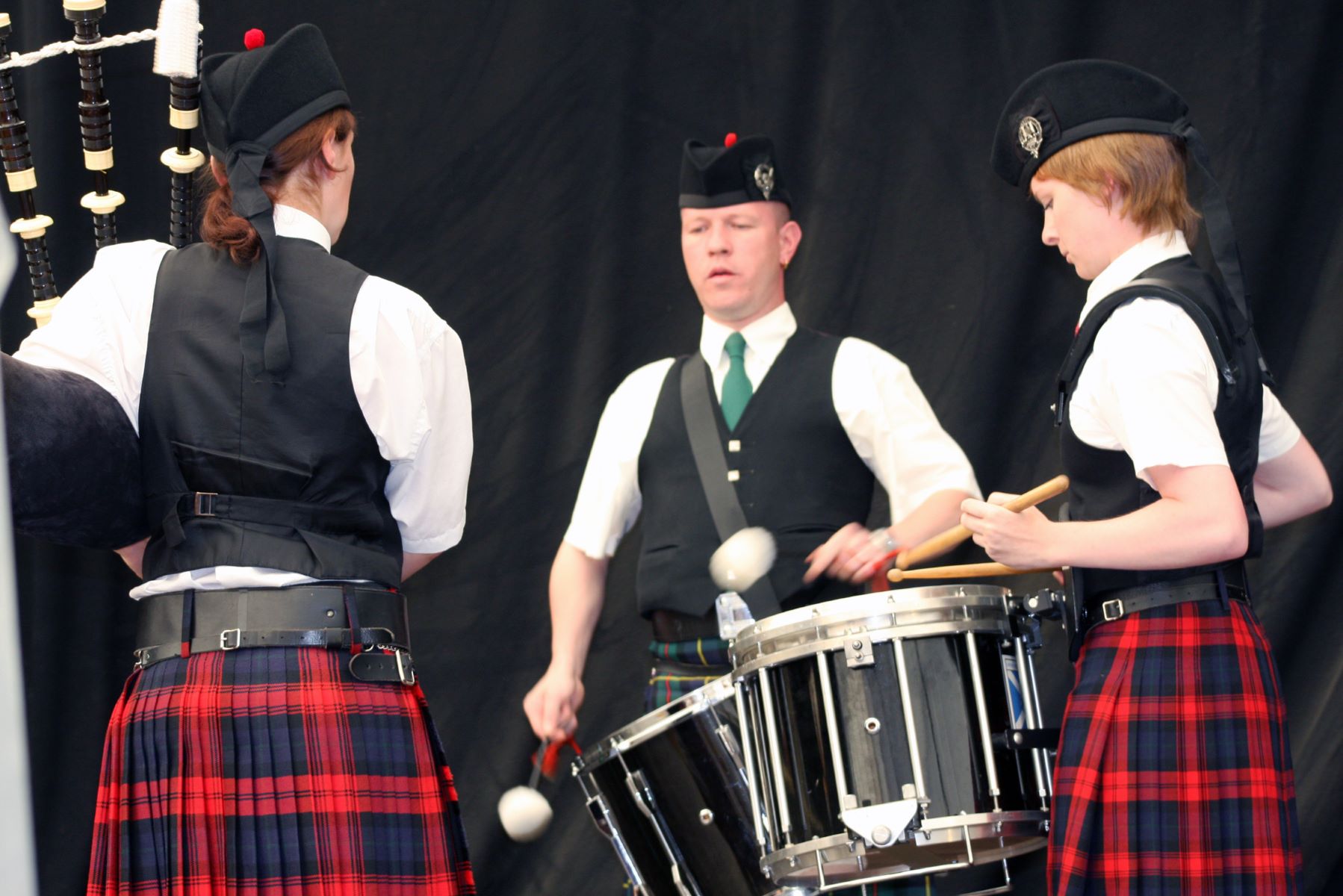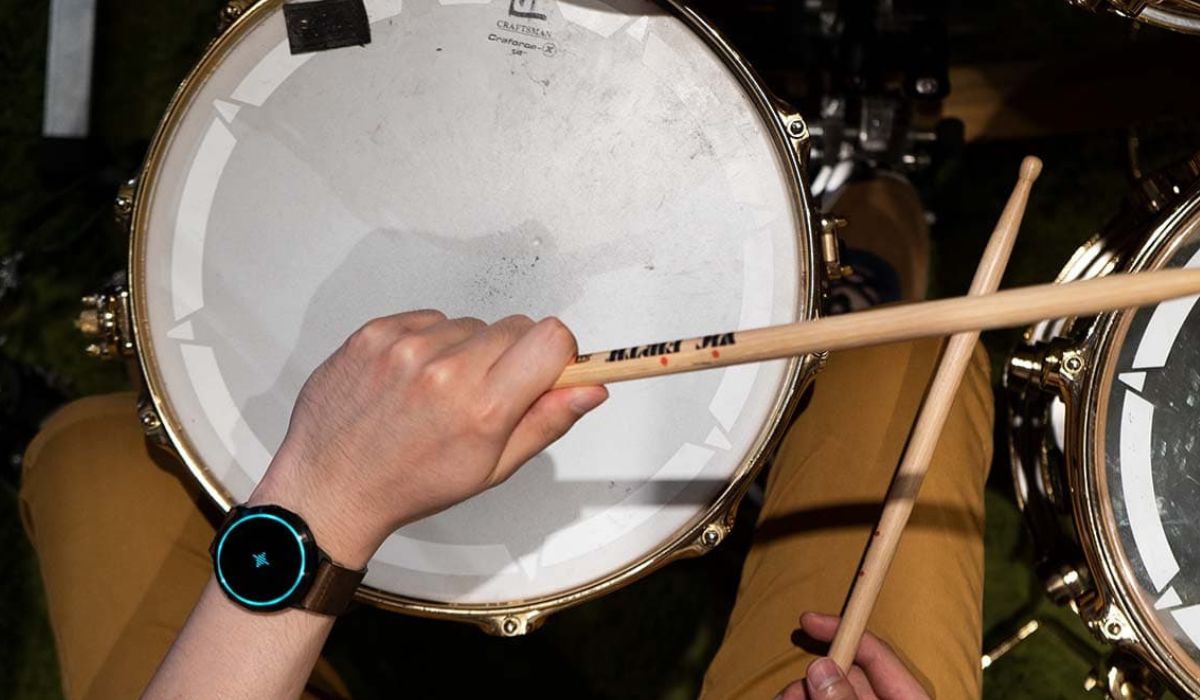Home>Instruments>Drums>How To Play A Latin Beat On Drums


Drums
How To Play A Latin Beat On Drums
Published: February 8, 2024
Learn how to play a captivating Latin beat on drums with our step-by-step guide. Master the rhythm and add flair to your drumming skills today!
(Many of the links in this article redirect to a specific reviewed product. Your purchase of these products through affiliate links helps to generate commission for AudioLover.com, at no extra cost. Learn more)
Table of Contents
Introduction
Playing a Latin beat on the drums adds a vibrant and rhythmic dimension to music. Whether you're a beginner or an experienced drummer, mastering the art of Latin rhythms can open up a world of musical possibilities. Latin beats are characterized by their infectious grooves, syncopated patterns, and lively energy, making them a popular choice in various music genres, including salsa, samba, bossa nova, and more.
In this comprehensive guide, we will delve into the fundamentals of playing a Latin beat on the drums, exploring the essential techniques, rhythms, and variations that define this captivating style. From understanding the unique characteristics of Latin rhythms to mastering the basic beat and adding creative variations, this article will equip you with the knowledge and skills to infuse your drumming with the irresistible flair of Latin music.
Whether you're drawn to the pulsating rhythms of salsa music, the laid-back feel of bossa nova, or the dynamic energy of samba, learning to play a Latin beat on the drums will not only expand your musical repertoire but also enhance your rhythmic prowess. Get ready to embark on an exciting rhythmic journey as we uncover the intricacies of Latin drumming and discover the key techniques for infusing your playing with the infectious spirit of Latin music.
Understanding Latin Rhythms
Before delving into the specifics of playing a Latin beat on the drums, it’s essential to grasp the unique characteristics of Latin rhythms. Unlike traditional rock or pop beats, Latin rhythms are deeply rooted in African and Afro-Cuban musical traditions, incorporating complex syncopation, polyrhythms, and a rich blend of percussion instruments.
One of the defining features of Latin rhythms is the emphasis on syncopation, which involves accenting off-beat notes to create a sense of rhythmic tension and release. This syncopated feel infuses Latin music with an infectious groove, inviting listeners to move and dance to the pulsating beat.
Furthermore, Latin rhythms often feature polyrhythmic patterns, where multiple rhythmic layers intertwine to create a rich and dynamic soundscape. This intricate interplay of rhythms is a hallmark of Latin music, adding depth and complexity to the overall groove.
Another crucial aspect of Latin rhythms is the use of traditional percussion instruments such as congas, bongos, timbales, and cowbells, each contributing distinct rhythmic patterns and textures to the music. Understanding the role of these instruments is integral to capturing the authentic essence of Latin rhythms on the drums.
Whether it’s the driving pulse of the salsa, the hypnotic sway of the bossa nova, or the exuberant cadence of samba, Latin rhythms encompass a diverse array of styles, each with its own unique rhythmic characteristics and cultural influences. By immersing yourself in the nuances of Latin rhythms, you’ll gain a deeper appreciation for the expressive power and infectious energy that define this vibrant musical tradition.
Basic Latin Beat
At the heart of Latin drumming lies the fundamental beat that serves as the rhythmic foundation for a wide range of Latin music styles. The basic Latin beat typically revolves around a core pattern that encapsulates the essence of the genre, providing a solid framework for building intricate variations and improvisations.
One of the most ubiquitous Latin beats is the “bossa nova” rhythm, renowned for its laid-back feel and understated elegance. To play a basic bossa nova beat on the drums, start by accentuating the first and third beats while maintaining a steady flow of eighth-note pulses on the hi-hat. This creates a gentle, swaying groove that captures the essence of bossa nova’s relaxed yet captivating rhythm.
For those venturing into the realm of salsa music, mastering the classic “cascara” pattern is essential. This pattern involves accenting the “and” of beat 2 and beat 4 on the snare drum while maintaining a driving pulse on the bass drum and accentuating the bell of the ride cymbal. The cascara pattern forms the rhythmic backbone of salsa music, infusing it with an irresistible energy that propels dancers to the dance floor.
When exploring the world of samba, the “baiao” rhythm takes center stage, characterized by its syncopated groove and lively bounce. To play a basic baiao beat on the drums, focus on accenting the off-beat sixteenth notes on the snare drum while maintaining a buoyant pulse on the bass drum and incorporating the distinctive timbale and cowbell patterns. This creates a vibrant and infectious rhythm that captures the spirit of samba’s celebratory vibe.
By mastering these basic Latin beats, drummers can lay a solid rhythmic groundwork for delving into the captivating world of Latin music. These foundational patterns serve as a springboard for incorporating creative variations and embellishments, allowing drummers to infuse their playing with the authentic spirit and rhythmic allure of Latin music.
Adding Variations to the Latin Beat
Once you’ve familiarized yourself with the basic Latin beats, it’s time to expand your rhythmic repertoire by incorporating variations that add depth and flair to your drumming. These variations not only infuse your playing with creativity but also capture the nuanced essence of different Latin music styles, allowing you to adapt to diverse musical contexts and express your rhythmic artistry.
For the bossa nova rhythm, adding subtle embellishments such as ghost notes on the snare drum and cross-sticking techniques can enhance the rhythmic texture, adding a touch of sophistication to the groove. Experiment with incorporating syncopated hi-hat patterns and nuanced dynamics to imbue the bossa nova beat with a captivating sense of fluidity and expression.
In the realm of salsa music, incorporating cascara variations and improvisational fills on the snare drum and tom-toms can elevate the rhythmic intensity, adding excitement and spontaneity to the groove. Explore different ride cymbal patterns and bell accents to create dynamic layers within the rhythm, infusing your playing with the infectious energy and driving pulse characteristic of salsa music.
When delving into samba rhythms, integrating intricate foot ostinatos on the bass drum and incorporating polyrhythmic interactions between the snare drum and tom-toms can enrich the rhythmic tapestry, capturing the exuberant spirit and infectious cadence of samba. Experiment with incorporating tamborim and agogo bell patterns to emulate the vibrant textures of traditional samba ensembles, adding an authentic touch to your drumming.
By exploring these variations and embracing a spirit of experimentation, drummers can expand their rhythmic vocabulary and infuse their Latin beats with a personalized touch. Whether it’s adding subtle nuances, improvising fills, or integrating traditional percussion elements, these variations allow drummers to imbue their playing with the expressive depth and rhythmic diversity that define the captivating allure of Latin music.
Tips for Playing a Latin Beat on Drums
Mastering the art of playing a Latin beat on the drums requires not only technical proficiency but also a deep understanding of the rhythmic nuances and cultural context that define Latin music. Here are some valuable tips to enhance your Latin drumming experience:
- Internalize the Rhythmic Feel: Immerse yourself in the diverse genres of Latin music and internalize the rhythmic feel by listening to authentic recordings. Pay close attention to the interplay of percussion instruments, the syncopated grooves, and the overall rhythmic sensibilities that characterize each style.
- Focus on Dynamics and Articulation: Latin music thrives on dynamic expression and nuanced articulation. Experiment with varying your drumming dynamics, incorporating ghost notes, and utilizing different stick techniques to infuse your playing with a rich palette of sonic textures.
- Study Traditional Percussion Patterns: Familiarize yourself with the traditional percussion patterns associated with Latin music, such as conga tumbao, bongo martillo, and timbale cascara. Understanding these patterns will deepen your rhythmic insight and enable you to authentically replicate their essence on the drum set.
- Embrace Syncopation and Off-Beat Accents: Embrace the syncopated nature of Latin rhythms by accenting off-beat notes and exploring polyrhythmic interactions between different elements of the drum set. This rhythmic complexity adds depth and vitality to your Latin beats.
- Incorporate Cross-Cultural Influences: Latin music is a melting pot of diverse cultural influences. Explore cross-cultural connections by integrating elements from other musical traditions into your Latin drumming, creating a fusion of rhythmic styles that adds a unique dimension to your playing.
- Cultivate a Responsive Listening Attitude: Develop a responsive listening attitude when playing with other musicians in a Latin music ensemble. Pay attention to the interlocking rhythms and melodic phrasing, and adapt your drumming to complement and enhance the overall musical conversation.
- Improvise and Experiment: Embrace the spirit of improvisation and experimentation in your Latin drumming. Explore creative variations, develop your improvisational skills, and fearlessly push the boundaries of rhythmic expression to infuse your playing with spontaneity and innovation.
By incorporating these tips into your practice routine and performance approach, you can elevate your Latin drumming skills and unleash the infectious vitality and rhythmic allure of Latin music through your playing.
Conclusion
Embarking on the rhythmic journey of playing a Latin beat on the drums opens a gateway to a rich and diverse musical tradition, brimming with infectious grooves, vibrant textures, and cultural vibrancy. Through this exploration, drummers can immerse themselves in the rhythmic tapestry of Latin music, honing their skills, and expanding their expressive capabilities.
By understanding the unique characteristics of Latin rhythms, mastering the foundational beats, and incorporating creative variations, drummers can infuse their playing with the irresistible spirit and rhythmic allure of Latin music. Whether delving into the laid-back sway of bossa nova, the pulsating energy of salsa, or the celebratory cadence of samba, the art of Latin drumming invites musicians to embrace a world of rhythmic diversity and cultural richness.
As drummers internalize the rhythmic feel, study traditional percussion patterns, and cultivate a responsive listening attitude, they develop a deeper connection to the expressive nuances and cultural heritage of Latin music. Through experimentation, improvisation, and a spirit of open-mindedness, drummers can weave a tapestry of rhythmic expression that transcends boundaries and resonates with audiences on a visceral level.
Ultimately, playing a Latin beat on the drums is not merely a technical pursuit but a journey of cultural immersion, rhythmic storytelling, and musical dialogue. It is an invitation to celebrate the diversity of Latin music, embrace the rhythmic vitality of its traditions, and weave a rhythmic narrative that pulsates with the heartbeats of diverse cultures and musical legacies.
As drummers continue to explore the captivating world of Latin rhythms, they enrich their musical vocabulary, expand their rhythmic horizons, and contribute to the ever-evolving tapestry of global musical expression. With each beat, each rhythm, and each improvisational flourish, they honor the timeless legacy of Latin music while forging new rhythmic pathways that resonate with the spirit of innovation and cultural exchange.











